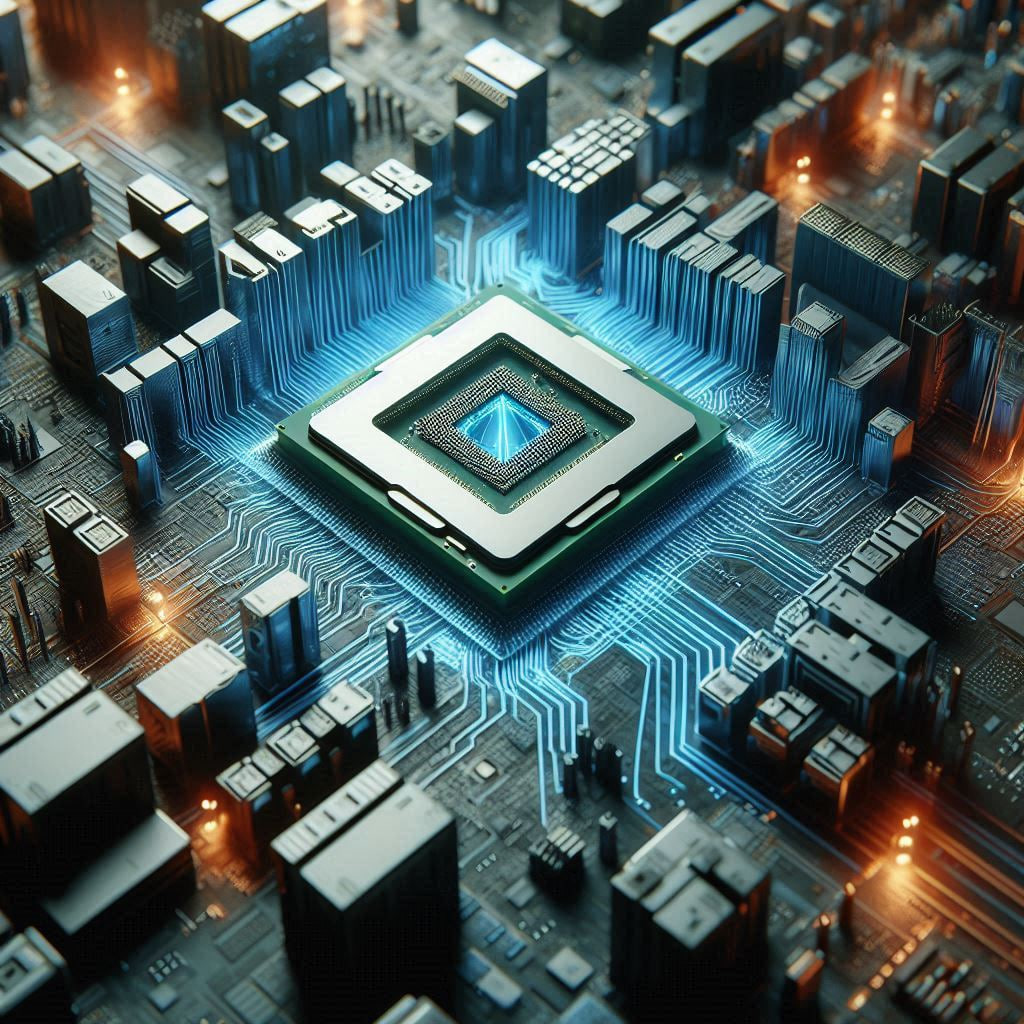Processors for enthusiasts: comparing architectures and new technologies
 Christopher Wilson
Christopher Wilson
In the world of computing, processors stand as the heart of the machine, driving innovation and performance. For enthusiasts, the choice of processor goes beyond mere specifications; it's about exploring the architectures and new technologies that push the boundaries of what's possible. As the landscape of processors continues to evolve, enthusiasts find themselves at the crossroads of cutting-edge advancements and practical applications. This article delves into the comparative analysis of processor architectures and the latest technologies, offering a comprehensive view for those passionate about the beating heart of their systems.
The evolution of processor architectures has been a fascinating journey, marked by significant milestones that have redefined computing. From the early days of simple, single-core designs to the multi-core, multi-threaded behemoths of today, the trajectory of processors reflects the relentless pursuit of performance, efficiency, and innovation. Enthusiasts have witnessed the transition from the classic x86 architecture to the emergence of ARM-based designs, each bringing its unique strengths and challenges.
The x86 architecture, developed by Intel, has been a cornerstone of personal computing for decades. Its complex instruction set computing (CISC) design allows for a rich set of instructions, making it versatile for a wide range of applications. However, this complexity comes with trade-offs in terms of power consumption and heat generation. Enthusiasts have long appreciated the raw power and compatibility of x86 processors, but the growing emphasis on efficiency has paved the way for alternative architectures.
In contrast, the ARM architecture, based on reduced instruction set computing (RISC), focuses on simplicity and efficiency. ARM processors, known for their power efficiency and scalability, have become ubiquitous in mobile devices and are making significant inroads into the desktop and server markets. The transition of Apple's Mac lineup to ARM-based M1 and M2 chips exemplifies this shift, offering enthusiasts a glimpse into a future where power and efficiency are not mutually exclusive.
The debate between CISC and RISC architectures is not merely academic; it has real-world implications for performance and energy consumption. Enthusiasts must consider the specific use cases and workloads they intend to tackle. For gaming and high-performance computing, the raw power of x86 may still hold an edge, while ARM's efficiency shines in portable and power-sensitive applications. This dichotomy underscores the importance of context in evaluating processor architectures.
Beyond the architectural choices, new technologies are reshaping the landscape of processors, promising enhancements in performance, security, and user experience. One such technology is the advent of chiplet-based designs. Traditionally, processors have been monolithic, with all cores and components integrated into a single die. Chiplets, on the other hand, break this mold by allowing different functional units to be manufactured separately and then integrated onto a single package. This modular approach offers several advantages, including improved yields, flexibility in design, and the ability to mix and match components to meet specific needs.
AMD's Ryzen and EPYC processors have been pioneers in adopting chiplet-based designs, delivering impressive performance gains and cost efficiencies. For enthusiasts, this translates to more options and potential for customization, enabling the creation of systems tailored to their exact specifications. The chiplet approach also facilitates advancements in heterogeneous computing, where different types of cores, such as CPU and GPU cores, can coexist and collaborate seamlessly on a single package.
Another transformative technology making waves is the integration of artificial intelligence (AI) and machine learning (ML) capabilities directly into processors. This trend, often referred to as AI acceleration, equips processors with specialized hardware to handle AI workloads more efficiently. Intel's Neural Compute Stick and AMD's Radeon Instinct are examples of this integration, providing enthusiasts with the tools to explore AI applications without relying solely on discrete accelerators.
AI acceleration is not just about raw performance; it opens up new possibilities for real-time applications, from enhanced gaming experiences with intelligent NPC behavior to more responsive and adaptive user interfaces. The incorporation of AI capabilities within processors also has profound implications for security, enabling more sophisticated threat detection and mitigation techniques. For enthusiasts, this convergence of AI and traditional processing power represents a new frontier to explore and innovate.
Memory and storage technologies are also undergoing significant transformations, with implications for processor performance. The advent of DDR5 memory, with its higher bandwidth and efficiency, promises to alleviate bottlenecks in data-intensive applications. Enthusiasts looking to build cutting-edge systems will find DDR5 to be a key enabler of next-level performance. Similarly, the adoption of PCIe 4.0 and the upcoming PCIe 5.0 standards offer substantial improvements in data transfer rates, enhancing the overall responsiveness and throughput of systems.
The synergy between processors and other components, such as memory and storage, underscores the holistic nature of performance optimization. Enthusiasts understand that a processor's potential is fully realized only when paired with complementary technologies that minimize latency and maximize data flow. This holistic approach is essential for achieving the best possible performance in gaming, content creation, and other demanding tasks.
As enthusiasts navigate the ever-evolving processor landscape, the role of cooling solutions cannot be overstated. The pursuit of higher clock speeds and more cores inevitably leads to increased thermal output, necessitating effective cooling strategies. Air cooling, liquid cooling, and even exotic solutions like phase-change cooling are all part of the enthusiast's toolkit. Each approach comes with its benefits and challenges, requiring a deep understanding of thermal dynamics and system design.
Overclocking remains a popular pursuit among enthusiasts, pushing processors beyond their factory-set limits to extract maximum performance. This practice, however, demands careful consideration of cooling solutions, power delivery, and system stability. Modern processors, with their sophisticated boost algorithms and thermal management, offer more headroom for overclocking, but the risks and rewards must be carefully balanced. Enthusiasts who master the art of overclocking can achieve remarkable performance gains, but they must also be prepared for the potential pitfalls.
The landscape of processors is also being shaped by trends in energy efficiency and sustainability. As global concerns about energy consumption and environmental impact grow, processor manufacturers are focusing on creating more power-efficient designs. ARM's big.LITTLE architecture, which pairs high-performance cores with energy-efficient cores, exemplifies this trend. Enthusiasts who prioritize sustainability can now build systems that deliver robust performance while minimizing their carbon footprint.
In conclusion, the world of processors for enthusiasts is a dynamic and multifaceted arena, characterized by a constant interplay between architecture, technology, and user needs. The choice between x86 and ARM architectures, the adoption of chiplet designs, the integration of AI acceleration, and the evolution of memory and storage technologies all contribute to the rich tapestry of options available to enthusiasts. As new advancements continue to emerge, the journey of exploring and mastering processor technologies remains an exhilarating pursuit. For enthusiasts, processors are not just components; they are the essence of innovation and the key to unlocking the full potential of their systems.
https://fileenergy.com/pokupki-v-kitae/svetomuzykalnyj-lazernyj-proektor
https://fileenergy.com/pokupki-v-kitae/tsvetomuzyka-svetomuzyka-svetodiodnaya-polusfera
Subscribe to my newsletter
Read articles from Christopher Wilson directly inside your inbox. Subscribe to the newsletter, and don't miss out.
Written by
